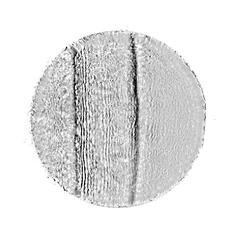URL: https://www.desy.de/news/news_search/index_eng.html
Breadcrumb Navigation
DESY News: Scientists film shock waves in diamond
News
News from the DESY research centre
Scientists film shock waves in diamond
Researchers have used ultra-short pulses of X-rays to film shock waves in diamonds. The study headed by DESY scientists opens up new possibilities for studying the properties of materials. Thanks to the extremely bright and short X-ray flashes, the researchers were able to follow the rapid, dynamic changes taking place in the shock wave with a high spatial as well as a high temporal resolution. The team around DESY physicist Prof. Christian Schroer is presenting its results in the journal Scientific Reports. “With our experiment we are venturing into new scientific terrain,” says the first author of the scientific paper, Dr. Andreas Schropp of DESY. “We have managed for the first time to use X-ray imaging to quantitatively determine the local properties and the dynamic changes of matter under extreme conditions.”

Snapshot of the shock wave (centre) racing through a diamond sample. The ripples on the left are caused by the edge of the sample. Credit: Andreas Schropp/DESY
“In order to take snapshots of such rapid processes, you need to use extremely short exposure times,” explains Schropp. The X-ray pulses produced by the LCLS last just 50 millionths of a billionth of a second (50 femtoseconds), allowing them to capture even the fastest movements. However, as the diamond sample was destroyed with every shot, the scientists had to repeat the experiment with identical specimens for each image, whereby each picture was taken a little later to show the shock wave at a slightly later time. Finally, they assembled these still images to create a film, as in a “flip book”.
Using this film, the scientists were able to determine quantitatively the change in density due to the shock wave. The X-ray microscope specifically developed for this purpose, permits details of the sample down to 500 millionths of a millimetre (500 nanometres) to be resolved. Together with the speed of sound measured, this allows the state of the diamond to be determined under conditions of extreme pressure. The analysis shows that the intense shock wave compresses the diamond – one of the hardest materials in the world – locally by almost ten percent.

Shock wave racing through diamond. Credit: Andreas Schropp/DESY
The scientists hope that by refining X-ray lasers and optimising the detector, the spatial resolution can be further improved to less than 100 nanometres, for instance also at the superconducting X-ray laser European XFEL that is currently being built from the DESY campus in Hamburg to the neighbouring town of Schenefeld. Thanks to the penetrating properties of X-rays, this technique can be applied to virtually any solid material, such as iron or aluminium. “The method is important for a series of applications in material science and for describing the physical processes occurring inside planets,” summarises Schroer.
Apart from DESY and SLAC, the Technical University of Dresden, the University of Oxford in the UK, and the Lawrence Livermore National Laboratory (LLNL) in the USA were also involved in the research.
Reference:
Imaging Shock Waves in Diamond with Both High Temporal and Spatial Resolution at an XFEL; Andreas Schropp, Robert Hoppe, Vivienne Meier, Jens Patommel, Frank Seiboth, Yuan Ping, Damien G. Hicks, Martha A. Beckwith, Gilbert W. Collins, Andrew Higginbotham, Justin S. Wark, Hae Ja Lee, Bob Nagler, Eric C. Galtier, Brice Arnold, Ulf Zastrau, Jerome B. Hastings & Christian G. Schroer; Scientific Reports, 2015; DOI: 10.1038/srep11089



